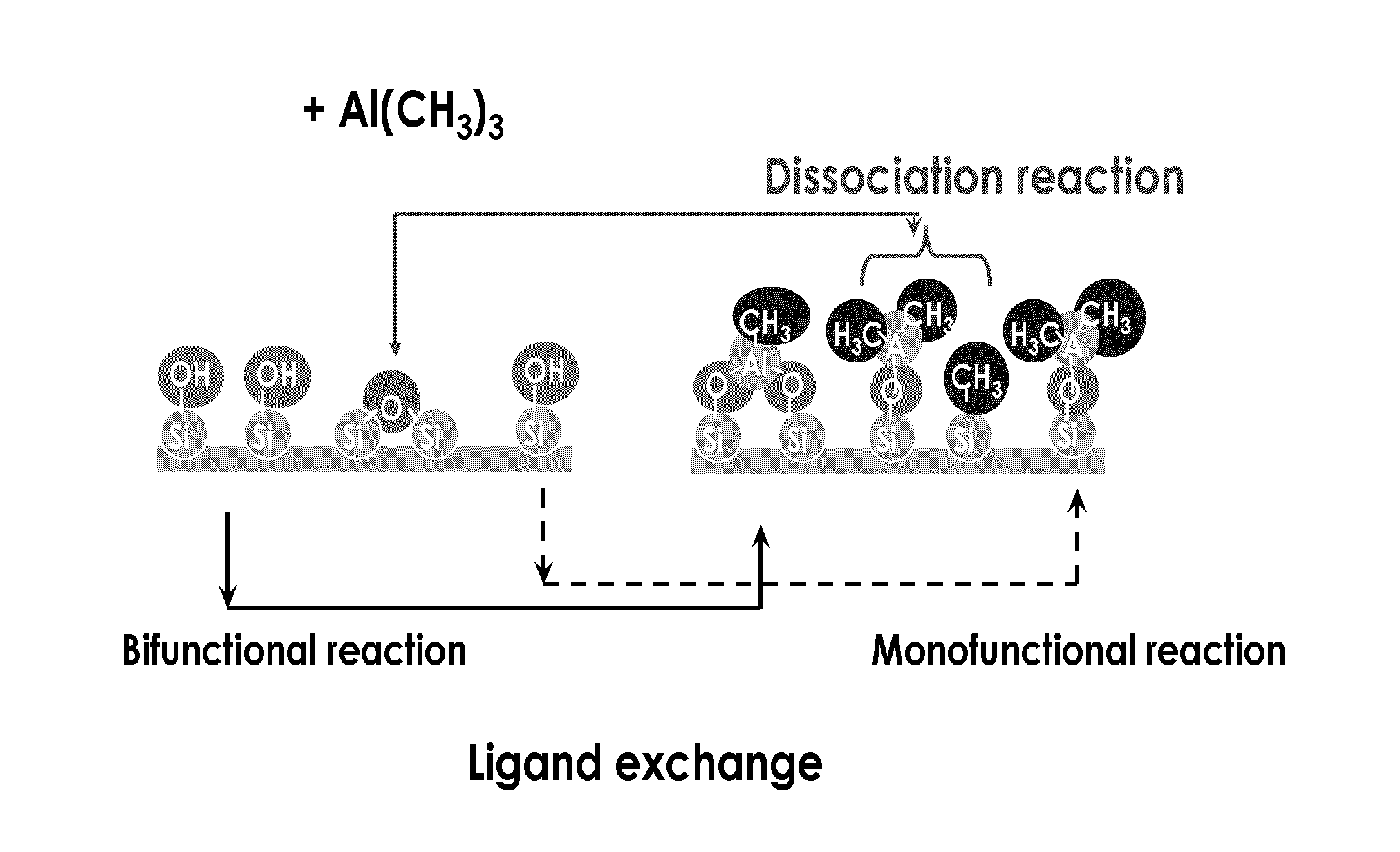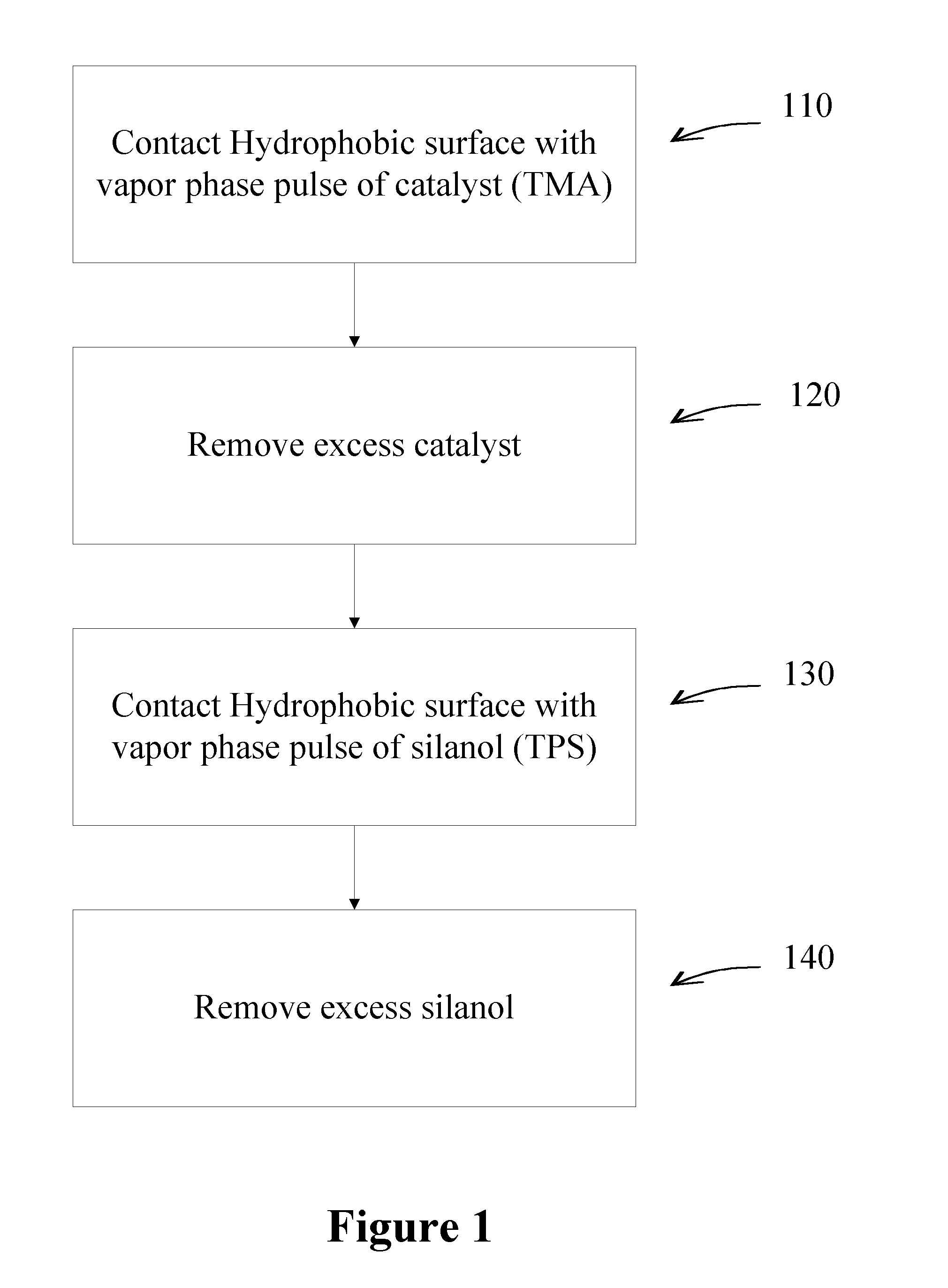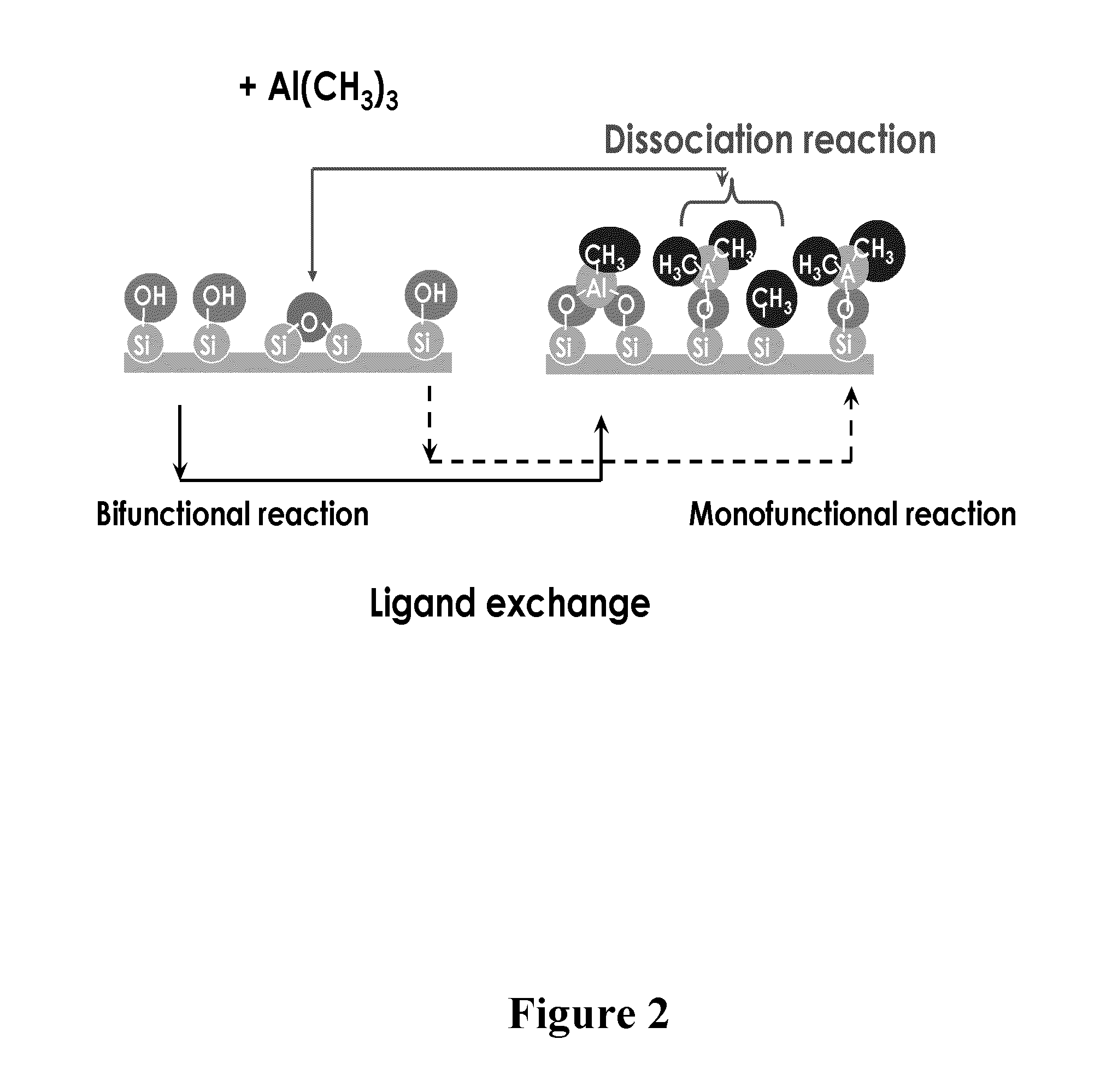Deposition of silicon dioxide on hydrophobic surfaces
a technology of hydrophobic surface and silicon dioxide, which is applied in the direction of chemical vapor deposition coating, coating, metallic material coating process, etc., can solve the problems of difficult control, difficult deposition of ultra thin, uniform and continuous barrier layer on the low-k surface, and difficult development of silicon dioxide process for deposition on hydrophobic surface without destroying hydrophobicity
- Summary
- Abstract
- Description
- Claims
- Application Information
AI Technical Summary
Problems solved by technology
Method used
Image
Examples
example 1
[0085]A series of experiments were performed to deposit silicon dioxide using TPS as a silicon precursor and TMA as a catalyst on a hydrophobic surface. A substrate comprising a low-k material (ASM Japan ELK 2.3) with a hydrophobic surface was contacted with TMA, followed by TPS at a temperature of 150° C. A similar reaction was performed in the absence of TMA. In the absence of TMA, no silicon dioxide growth was observed on the low-k material. However, a single pulse of TMA, followed by TPS, produced silicon dioxide growth of approximately 20 nm, which can be seen in as difference in thickness in the TEM images in FIG. 4.
example 2
[0086]Silicon dioxide is deposited on a porous, low-k material using a controlled dose of TMA as a catalyst. TPS used as the silanol.
[0087]A reactor is equipped with computer-controlled pneumatic dose valves for controlled precursor deposition. Alternating exposures of TMA and TPS are used for silicon dioxide thin film deposition. The dose of TMA is predetermined such that the depth the TMA penetration into the pores is limited and essentially only reactive sites on the top-most surface of the low-k material react with the TMA.
example 3
[0088]A copper barrier layer is formed by first depositing silicon dioxide on a hydrophobic surface of a substrate comprising a low-k material. The substrate is contacted with a pulse of TMA, the excess TMA is evacuated from the reaction space and the substrate is contacted with a pulse of TPS, thereby forming a silicon dioxide layer on the hydrophobic surface. The silicon dioxide converts the hydrophobic surface to a hydrophilic surface suitable for deposition of the barrier layer by atomic layer deposition (ALD). A barrier layer is subsequently deposited on the silicon dioxide layer by ALD.
PUM
| Property | Measurement | Unit |
|---|---|---|
| temperature | aaaaa | aaaaa |
| temperature | aaaaa | aaaaa |
| thickness | aaaaa | aaaaa |
Abstract
Description
Claims
Application Information
 Login to View More
Login to View More - R&D
- Intellectual Property
- Life Sciences
- Materials
- Tech Scout
- Unparalleled Data Quality
- Higher Quality Content
- 60% Fewer Hallucinations
Browse by: Latest US Patents, China's latest patents, Technical Efficacy Thesaurus, Application Domain, Technology Topic, Popular Technical Reports.
© 2025 PatSnap. All rights reserved.Legal|Privacy policy|Modern Slavery Act Transparency Statement|Sitemap|About US| Contact US: help@patsnap.com



